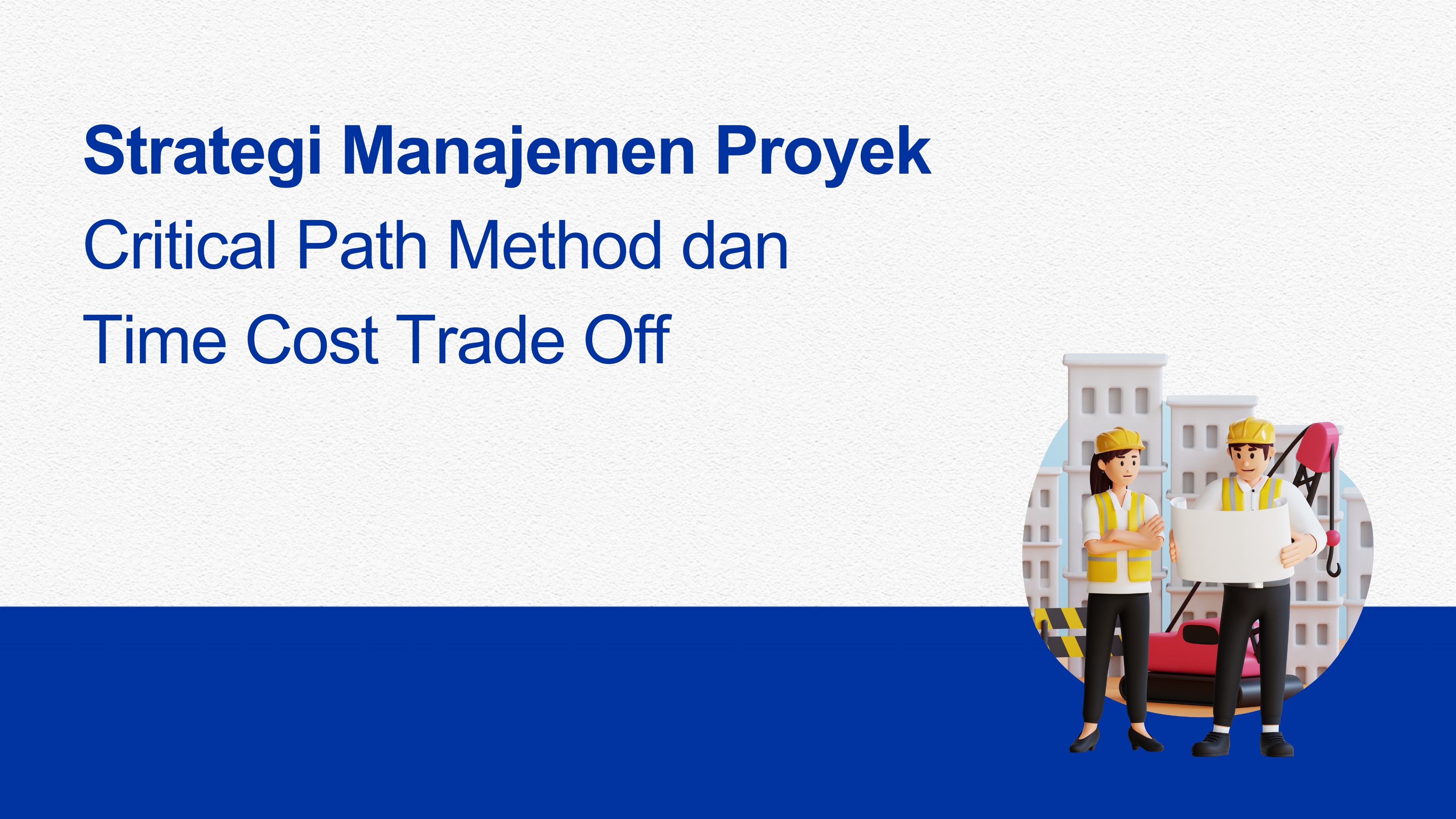Project Management Strategies to Overcome Time and Cost Constraints: Critical Path Method and Time Cost Trade Off

In project management, particularly within the civil engineering sector, optimizing costs and time is key to success. Every project operates within the constraints known as the "Triple Constraint," which includes three main elements: cost, time, and quality. These elements must be carefully managed to ensure that a project is completed within budget, on time, and with the desired quality standards.
One of the main challenges in project management is accelerating project completion without compromising quality. To achieve this, developers often need to make various adjustments, such as using faster construction methods, utilizing more efficient tools, increasing working hours, or selecting materials that are easier to install. However, this acceleration must be done with the right balance to avoid impacting the project's final quality.
This is where the role of project management becomes crucial. Project management, a branch of civil engineering, focuses on planning, coordinating, and managing resources to achieve project goals. One technique used in project management to manage time and cost is the Critical Path Method (CPM).
The Critical Path Method (CPM) is a technique used to plan and schedule activities within a project. CPM helps identify the most critical sequence of activities, which has the longest total duration in the project. By identifying this critical path, project managers can focus on the activities that must be completed on time to avoid delaying the entire project.
As explained by Rifaldi Aldi Saputra, ST., MT, and Era Agita Kabdiyono, ST., M.T., from the Civil Engineering Study Program at Dian Nusantara University, the Critical Path Method not only aids in time planning but also provides guidance in project monitoring and control. Delays in activities on the critical path will cause delays in the overall project, so project managers must ensure that these activities proceed according to plan.
In addition to CPM, there is also the Time Cost Trade Off, a supporting method in project management. The Time Cost Trade Off is an analytical process aimed at exploring ways to accelerate project completion by incurring additional costs or, conversely, reducing costs by extending the project timeline. This method provides additional flexibility in project management, allowing project managers to adjust their strategies according to the project's needs and constraints.
By implementing CPM and Time Cost Trade Off in project management, developers can achieve faster project completion without sacrificing quality. This allows projects to be quickly used by interested parties, such as buyers or end-users, while enabling developers to move on to the next project promptly. Moreover, applying these techniques can help open new prospects and drive the economy forward more quickly.
In the academic context, the Civil Engineering Study Program at Dian Nusantara University provides an in-depth understanding of project management, including techniques like CPM and Time Cost Trade Off. Students are encouraged to understand the problems in infrastructure management and optimize processes to ensure projects are completed efficiently, effectively, and sustainably.
Thus, through a cohesive and structured approach, project management can be a powerful tool to overcome time and cost constraints, ensure project success, and open new opportunities in the world of construction and infrastructure development.
(Danang Respati Wicaksono / HUMAS UNDIRA)
Press Contact :
Biro Humas & Sekretariat Universitas Dian Nusantara
Facebook : www.facebook.com/undiraofficial
Instagram : www.instagram.com/undiraofficial
Twitter : www.twitter.com/undiraofficial
www.undira.ac.id

Campus Tanjung Duren
Jln. Tanjung Duren Barat II No. 1
Grogol, Jakarta Barat. 11470
Campus Green Ville
JIn. Mangga XIV No. 3
Campus Cibubur
Jln. Rawa Dolar 65
Jatiranggon Kec. Jatisampurna, Bekasi. 17432




.jpg)





